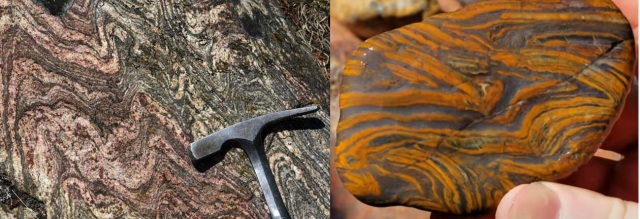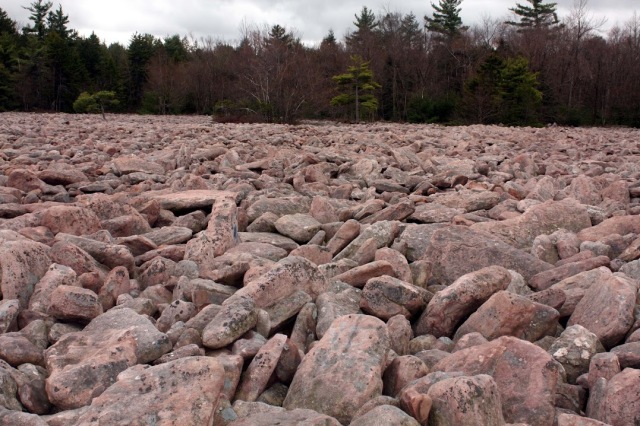TWO EPOCHS OF BARYONIC DARK MATTER, WITH FREE-FLOATING SUPER-PUFF-LIKE PLANETS AS THE SECOND AND PRESENT EPOCH
(The complete article will be forthcoming.)
Abstract:
¶ Baryonic dark matter (DM) has an early universe problem. It appears to require a 6-fold increased baryon-to-photon ratio that is incompatible with Big Bang nucleosynthesis (BBN) and incompatible with the first acoustic peak in the angular power spectrum of the CMB. But significantly, this baryonic DM hypothesis requires a canonical baryon-to-photon ratio, with sequestration of 5/6 of the baryon photon fluid from the Hubble flow by the epoch of matter-radiation equality that carries through to recombination. Sequestration following BBN allows for canonical conditions at and locally canonical conditions within the Hubble flow at recombination, matching observations.
¶ This conceptual (non-mathematical) outline for a baryonic DM hypothesis proposes 2 epochs of baryonic DM straddling the epoch of recombination. In the first epoch, 5/6 of the baryon-photon fluid was sequestered from the Hubble flow by primordial black holes (PBHs), with the associated primordial photons sub-sequestered behind PBH event horizons. In this scenario, rotating (Kerr) PBHs caused frame dragging of baryon-photon fluid in PBH ergospheres that collimated the energetic and super-abundant primordial photons. The energetic collimated photons tangentially kicked the fermions out of the ergospheres, while the photons freely streamed across the event horizons. The ejected fermions created densified, photon-depleted baryonic halos around their respective PBHs, forming proto dwarf galaxies (PDGs), cored with PBHs.
¶ Accretion of 5/6 of all primordial photons in their early energetic state swelled PBHs to supermassive black hole (SMBH) proportions. And in turn, these early behemoths provided the horsepower to sequester 5/6 of the baryon photon fluid by the epoch of matter-radiation equality. The very-early formation of SMBHs appears to require a small degree of new physics. Roy Kerr proposes that singularities don’t physically exist in black holes, suggesting that photons may continue to experience cosmic redshift after crossing black hole event horizons. This suggests that very-early SMBHs effectively underwent ‘black hole redshift’, wherein their photon-bloated early masses decreased asymptotically over time toward their fermionic masses.
¶ The second and present epoch of baryonic DM arose suddenly within PDGs after the epoch of recombination, forming ‘ultra puff’ DM, similar to super-puff planets, but with still-lower density and ultra-low metallicity. Gravitational lensing of quasars detect variability by a large population of objects with a mass of ∼10 M⊕. By contrast, gravitational lensing of stars in Galactic studies excludes the possibility of planets or planetary-mass black holes, “but objects that have a peak column-density Σ0<∼105 g cm−2 do not automatically violate the Galactic constraints because they’re not strong gravitational lenses in that context” (Tuntsov, Lewis & Walker 2023). The finding of planetary mass objects in quasar lensing that are restricted in their column density by the absence of Galactic lensing is the fundamental evidence for ultra puffs as a DM candidate.
¶ Photon decoupling associated with the epoch of recombination released the external photon pressure on PDGs, causing expansive cooling that presumably triggered ‘secondary recombination’ within PDGs, however, secondary recombination was not accompanied by photon decoupling, since the associated primordial photons had already been sub-sequestered within PBHs. Cooling of ionized gas leads to rapid progressive fragmentation, designated “shattering”, which ceases at a characteristic length scale of ~ 0.1 pc/n (where n is the number density of the gas), which is the scale at which fragmented cloudlets reach thermal equilibrium with their surroundings, precluding further fragmentation (McCourt et al. 2016). Significantly, the mass confined within this minimum length scale is 5.7 M⊕, which is within a factor of 2 of the estimated mass of quasar lenses (∼10 M⊕).
¶ Thermal fragmentation and Jeans instability required stellar metallicity to provide infrared cooling, which was presumably provided by Population III (Pop III) stars that had formed and died prior to recombination in densified PDG halos. Shattering of PDGs created planetary-mass cloudlets susceptible to Jeans instability in the high pressure, high atomic number density environment, forming ~ 1012 ultra puffs per PDG. Ultra puffs were presumably gas magnets, competing with stellar-mass Jeans instability for the residual gas, transforming gaseous PDGs into modern gas-free dwarf spheroidal (dSphs), ultra faint dwarf (UFDs) galaxies, containing Population II (Pop II) stars and ultra puff DM. Condensation and sedimentation of Pop III star metallicity formed icy-rocky cores, clarifying the greatly-extended atmospheres and making ultra puffs nearly transparent. Then gravitational accretion of primordial dwarf galaxies gradually formed the large, secondary accretional spiral and elliptical galaxies.
¶ Sequestration of 5/6 of the baryon-photon fluid by the epoch of matter-radiation equality created a sub-canonical sound horizon, explaining the tension in the Hubble constant.
¶ Baryonic DM potentially provides the simplest and most intuitive explanation for the Tully-Fisher relation and the associated radial acceleration relation, which is the direct interconversion of luminous and dark versions of baryonic matter, based on the local radial acceleration. Ultra puffs are presumably surrounded by greatly-extended ionospheres, ionized by the headwind of interstellar gas on highly-inclined halo orbits. A high-velocity interstellar wind would create a bow shock ahead of the ultra puff, with a long trailing tail, like the heliotail of the heliosphere of the Sun. The local radial acceleration determines the Hill sphere radius of free-floating planets in the same way it does for stars, and if the tail of an ultra puff ionosphere nominally exceeds its Hill sphere, then the ultra puff will evaporate, otherwise it may accrete interstellar gas. An evaporating ultra puff will progressively increase in metallicity due to fractionation, since its metallicity is locked up in its icy-rocky core, and increasing metallicity will densify the ultra puff until the tail of its ionosphere no longer exceeds its Hill sphere, shutting down further evaporation, thus providing a regulating mechanism for the RAR.
………………..
¶
AQUEOUS DIFFERENTIATION OF KUIPER BELT OBJECTS (KBOs):
(Broadly revised May 2023)

Figure 4
Felsic-mafic banding and isoclinal folding in both migmatite and banded iron formations points to a common formation mechanism by modulated hydrothermal precipitation from hydrothermal plumes, forming mounds that slump when the talus-slope exceeds the critical angle, causing the isoclinal folding.
Migmatite image credit: Marli Miller https://geologypics.com/
BIF image credit: Chris’s Granite Paradise https://www.youtube.com/watch?v=SqRGJsP66vw&ab_channel=Chris%27sGraniteParadise
¶ An extraterrestrial origin for Earth’s continental tectonic plates is based on the central insight of the remarkable similarity between banded iron formations (BIF) and migmatite, both exhibiting felsic-mafic banding and small-scale isoclinal folding. This physical analog is suggested to extend to a formational analog, where both BIF and migmatite formed by modulated authigenic sedimentation from hydrothermal plumes, with BIF forming on Earth and migmatite having formed in hot-classical KBOs. Then hot-classical KBOs with authigenic sedimentary cores having a gneissic composition were perturbed into the inner solar system during the late heavy bombardment (LHB), circa 4.2–3.8 Ga.
………………..
¶¶
STARS, PLANETS, MOONS, MINOR PLANETS AND COMETS:

Figure 1
Protostar system L1448 IRS3B, showing a central binary pair of protostars (IRS3B-a & IRS3B-b, with a combined mass of ∼1 M☉), orbited by a less-massive but much-brighter companion protostar (IRS3B-c, with a mass of ∼0.085 M☉) in a circumbinary orbit.
An alternative ‘symmetrical FFF’ ideology, presented here, suggests that the luminosity difference is the result of age difference, where the system formed by a flip-flop mechanism, designated, symmetrical flip-flop fragmentation (FFF). Symmetrical FFF suggests that the companion protostar formed at the center of the system, followed by a dual disk instability of two arms of a (spiral) density wave of a massive accretion disk. The resulting twin disk-instability objects were much-more massive than the diminutive prestellar/protostellar core, forming a dynamically-unstable system. Dynamic instability caused chaotic orbital interplay, with energy equipartition in orbital close encounters, ‘evaporating’ (flip-flopping) the diminutive core into a circumbinary orbit around the much-more-massive binary pair, forming a hierarchical trinary star system.
Image Credit: Bill Saxton, ALMA (ESO/NAOJ/NRAO), NRAO/AUI/NSF – Publication: John Tobin (Univ. Oklahoma/Leiden) et al.
¶ Revolutionary stellar and planet formation mechanisms that were designed to explain the 3 sets of twin planets in our highly-unusual solar system—Jupiter-Saturn, Uranus-Neptune, Venus-Earth—coincidentally predict the formation of a siderophile-depleted debris disk just prior to the supposed 4,567 Ma birth of our solar system that lay on the 3-oxygen-isotope terrestrial fractionation line. This early debris disk with a terrestrial composition formed the hot-classical KBOs, which were perturbed into the inner solar system during the LHB, where they impacted Earth to form the continental tectonic plates on Earth.
………………..
¶¶

Hickory Run boulder field, Hickory Run State Park Pennsylvania
¶ Discrete boulder fields attributed to the last glacial maximum (LGM) are suggested here to have had a catastrophic origin similar to that of the 500,000 Carolina bays distributed along the Atlantic seaboard and Gulf Coasts of the continental United States. Carolina bays are suggested by others to be secondary impact basins from the ejecta curtain of Laurentide ice-sheet fragments from a primary bolide impact on or airburst above the Laurentide ice sheet in the Great Lakes region, 12,800 B.P. Ballistic trajectories that fell short of the coastal regions and landed on thin soil may have fractured the underlying bedrock, in some cases creating discrete boulder fields that are still devoid of vegetative cover almost 13 thousand years later.
………………..
